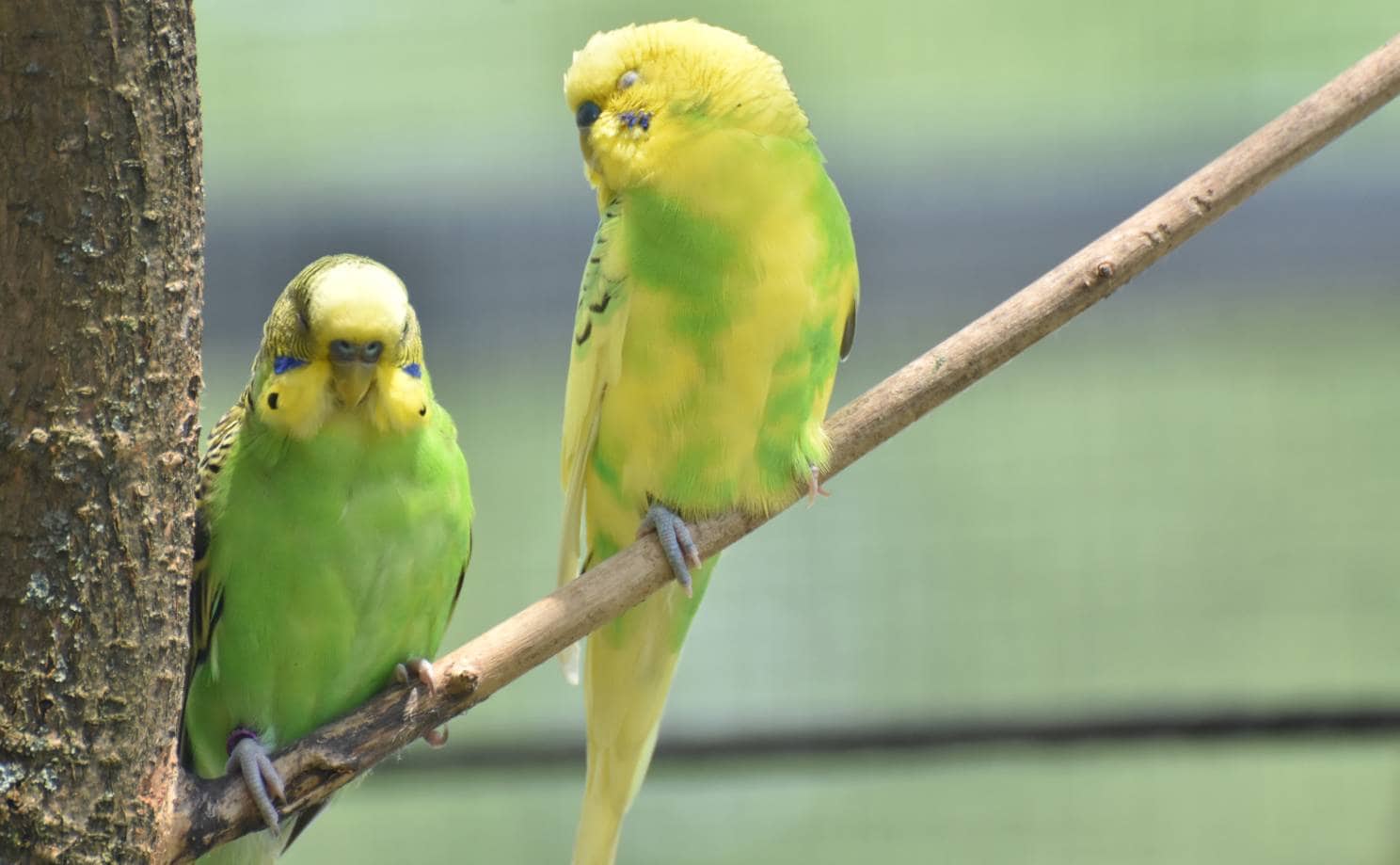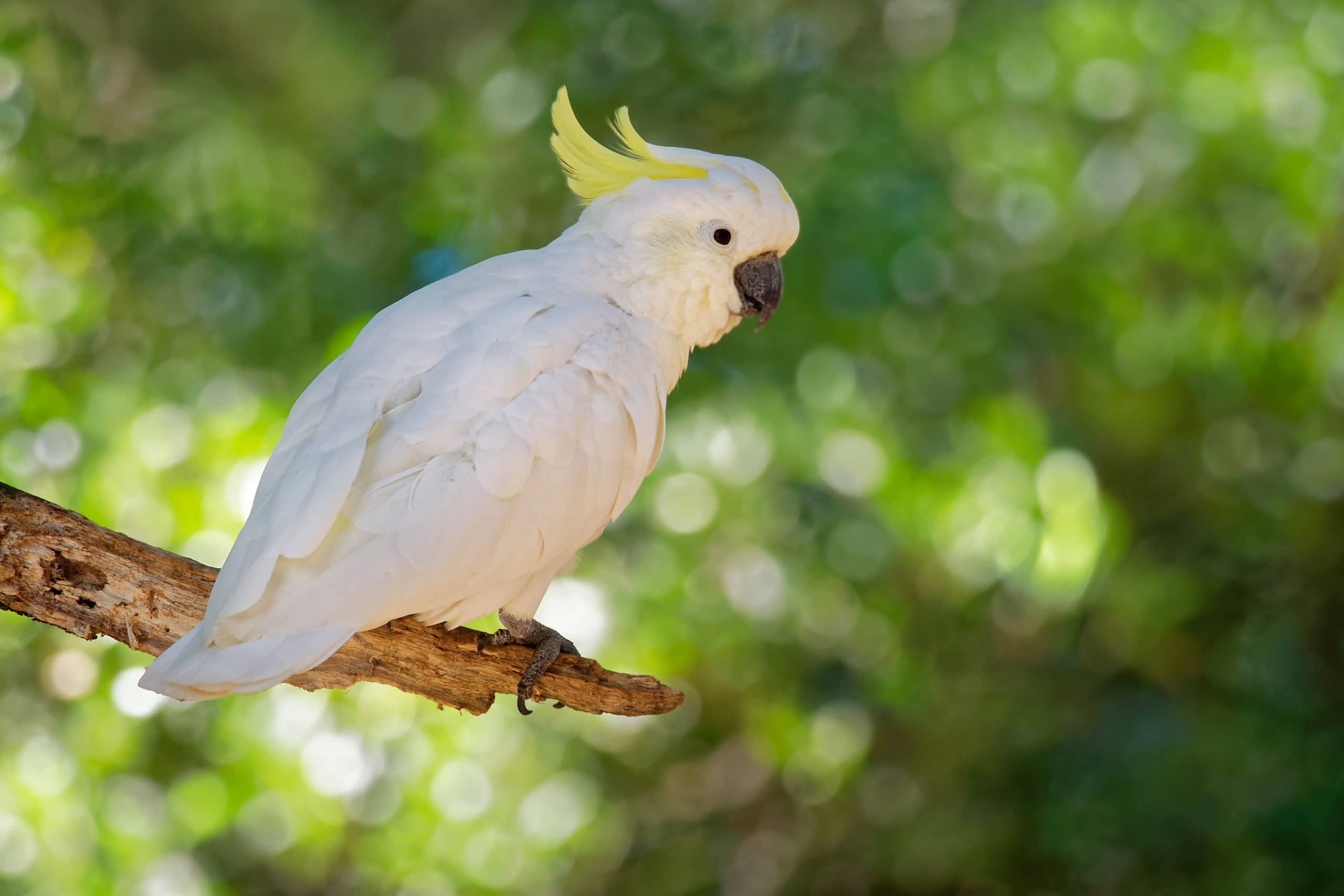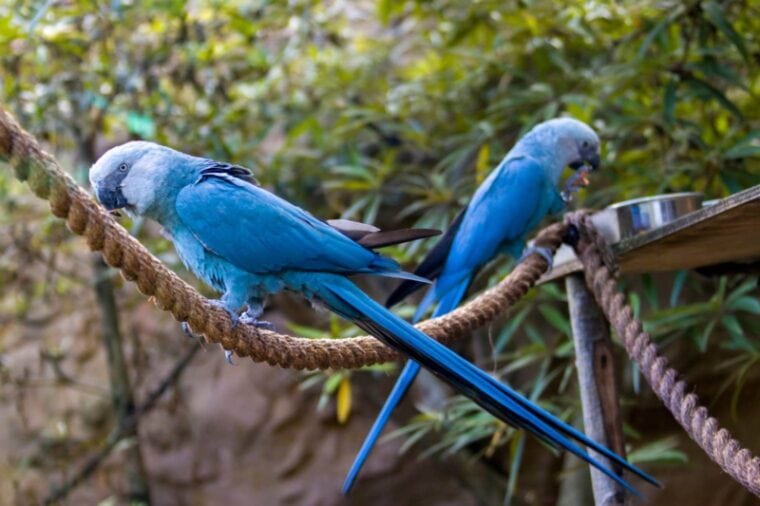
While there seem to be plentiful parrots in existence today, some breeds have been recognized as endangered and may not remain in existence for much longer if current conditions for them persist. Several types of parrots are listed as endangered for one reason or another, and all deserve attention and understanding. Here are 10 parrots that you should know about and why they are considered endangered.
The 10 Most Endangered Parrots
1. Orange-Bellied Parrot
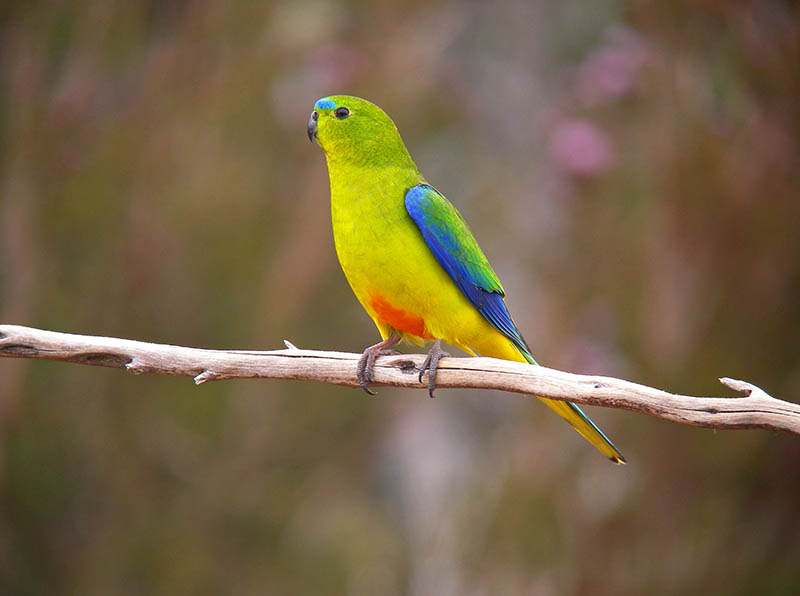
Orange-bellied parrots live in Australia and are considered one of the most endangered parrot types on the planet. The danger comes from various issues, including habitat degradation, disease, and the introduction of predator species to their environment. It is extremely uncommon to spot one of these birds in the wild today.
2. Philippine Cockatoo

Due to the great loss of this breed’s natural habitat and trapping, the Philippine Cockatoo rapidly declined in numbers for a time. At one point, these birds were almost extinct, but their numbers increased once protective habitats were created. However, there are still few of them in existence, and they are still considered critically endangered.
3. Lear’s Macaw
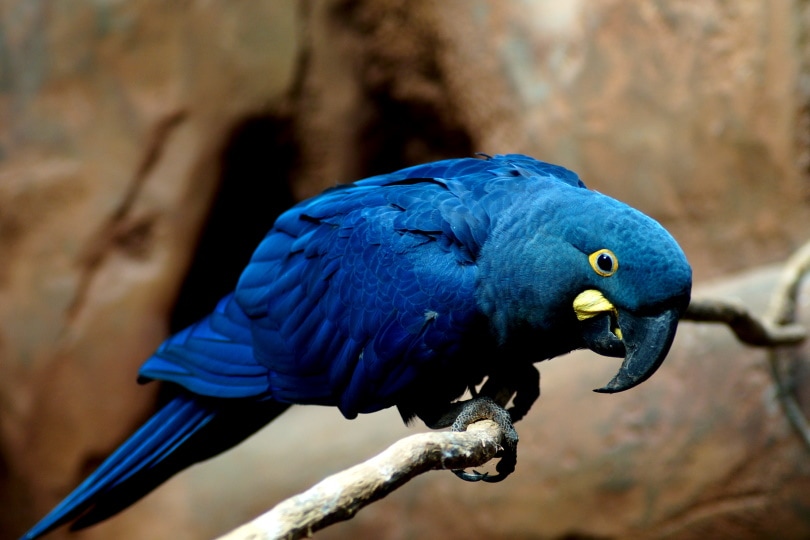
There are only about 1,300 Lear’s Macaws alive today, all of which are known to live in Brazil. These noisy yet beautiful birds enjoy life in a controlled, protected habitat, where biological field stations have been set up to study them and learn how to help their numbers increase. The protected land also helps keep poachers away and encourages responsible eco-tourism.
4. Spix’s Macaw
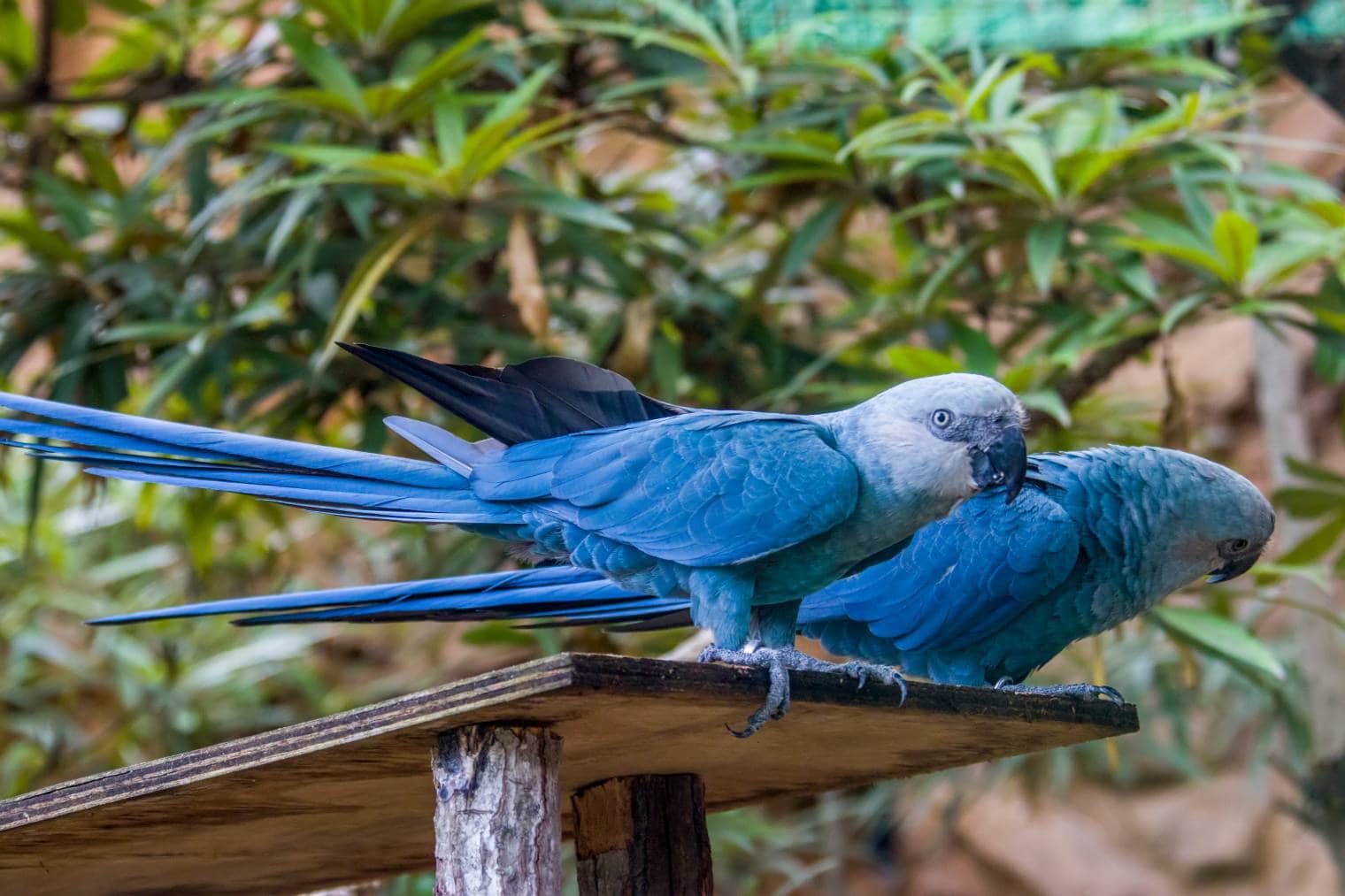
It is devastating that the Spix Macaw lives only under human care today due to deforestation, poaching, trapping, and trading. While these birds have been labeled as extinct in the wild, up to 100 of them live under human care, where they are being studied, bred, and protected in hopes of increasing their numbers and someday releasing them back into the wild, where they can proliferate.
- You may want to read next: Red-bellied Macaw
5. Kakapo
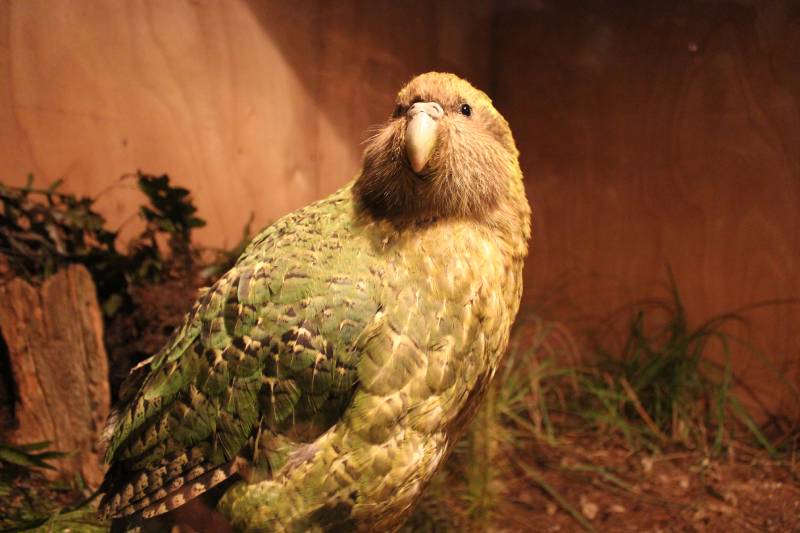
The Kakapo is a critically endangered parrot breed that is getting help from scientists, conservationists, and volunteers to increase their numbers and fight extinction. With just about 200 left living in the wild today, every effort to preserve the Kakapo is welcome in New Zealand, which is the only place in the world where the bird lives.
6. Yellow-Eared Conure
The Yellow-eared Conure was considered extinct until the late 1900s, when a group of them was discovered in Colombia by researchers. These birds have been listed as endangered since then, although their population is increasing slowly but surely. With any luck, this parrot will flourish enough to be removed from the endangered list in due time.
7. Puerto Rican Amazon

Puerto Rican Amazon parrots have been on the endangered species list since the 1960s, when only about 70 of them were known to be living in the wild. Numbers continued to dwindle until conservationists started breeding them in an attempt to save them. Today, more than 300 Puerto Rican Amazons live under human care, and up to 100 of them are living in the wild.
8. Cape Parrot

The Cape parrot is considered one of Africa’s rarest parrots, and there are thought to be fewer than 1,000 living in the wild today. Their population is stable, but deforestation and poaching are concerns that can quickly threaten the remaining birds living in their natural habitats. Many are living under human care as pets, but there are no official organizations running breeding programs to try to increase their numbers in the wild.
9. Sinu Parakeet
Northern Colombia has always been home to the Sinu parakeet, but it is feared that their extinction is right around the corner if it has not happened already. It has been decades since anyone has recorded spotting one of these birds in the wild, although experts believe that since they live in mostly unexplored forests, there are likely up to 50 of them still living in their natural habitat.
- See Also: Alexandrine Parakeet
10. Blue-fronted Lorikeet

Hailing from Indonesia, the Blue-fronted Lorikeet is rarely seen in the wild. In fact, one was not seen or recorded for decades until 2014, when a photographer was able to spot and take pictures of a pair. It is unknown how many are still in existence today, but it is feared that they are on the verge of extinction.
 Why Do Parrots Become Endangered?
Why Do Parrots Become Endangered?
Unfortunately, parrots become endangered for various reasons that are the result of human actions. For instance, many parrots become endangered because their habitats are being destroyed by farmers and developers. Many parrots are captured and poached, dwindling their numbers at an alarming rate. Other factors also come into play, such as climate change, pollution, and disease proliferation.
- What to read next: Red-bellied Parrot
 In Conclusion
In Conclusion
Parrots are beautiful animals that deserve the opportunity to flourish like any other living being on this planet. Sadly, some parrot breeds are not having an easy time. Learning more about the reasons for endangerment and the steps that you can take to help protect parrots can go a long way in making sure that other parrot breeds do not end up on any endangered lists.
You May Also Like:
- 20 Best Parrots to Keep as Pets (With Pictures)
- 21 Types of Cockatoo Species & Colors
- 100+ Parrot Names: Ideas for Colorful & Animated Parrots
Featured Image credit: Danny Ye, Shutterstock

 Why Do Parrots Become Endangered?
Why Do Parrots Become Endangered?